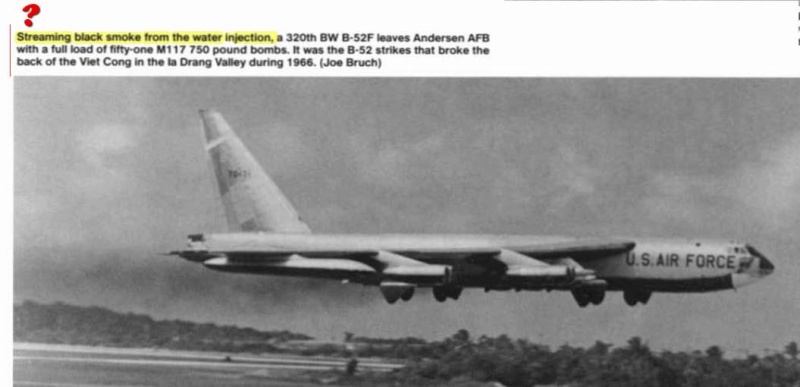Why the conventional flat bullets are succeeded by Rebated Boattail Base??
Doesnt in the former case a uniform pressure be exerted across a flat base to effectively push the bullet out of muzzle with precise orientation??
Inferior

Superior

 Μilitary Questions & Answers
Μilitary Questions & Answers

 Re: Μilitary Questions & Answers
Re: Μilitary Questions & Answers Re: Μilitary Questions & Answers
Re: Μilitary Questions & Answers
 Re: Μilitary Questions & Answers
Re: Μilitary Questions & Answers

 Re: Μilitary Questions & Answers
Re: Μilitary Questions & Answers
 Re: Μilitary Questions & Answers
Re: Μilitary Questions & Answers Re: Μilitary Questions & Answers
Re: Μilitary Questions & Answers can Russian aircraft use GBU bomb??
can Russian aircraft use GBU bomb??you mean software ??Hoof wrote:Looks a bit on the old side... they could have probably used different type stabilizers on it...
but I think Russian planes can use it... as long as mounting system on a hardpoint is compatible... but then equipment on board of aircraft also has to be compatible with guidance system on a bomb itself...
 Re: Μilitary Questions & Answers
Re: Μilitary Questions & Answers
Water injection has been used in both reciprocating and turbine aircraft engines.
When used in a turbine engine, the effects are similar, except that
preventing detonation is not the primary goal. Water is normally
injected either at the compressor inlet or in the diffuser just before
the combustion chambers. Adding water increases the mass being
accelerated out of the engine, increasing thrust, but it also serves to
cool the turbines. Since temperature is normally the limiting factor in
turbine engine performance at low altitudes, the cooling effect allows
the engines to be run at a higher RPM with more fuel injected and more
thrust created without overheating.[2]
The drawback of the system is that injecting water quenches the flame
in the combustion chambers somewhat, as there is no way to cool the
engine parts without cooling the flame accidentally. This leads to
unburned fuel out the exhaust and a characteristic trail of black smoke.
 Re: Μilitary Questions & Answers
Re: Μilitary Questions & Answers


 Re: Μilitary Questions & Answers
Re: Μilitary Questions & AnswersWhich launching method you relatively prefer either Hot launch or a cold
launch??Mine understanding is it is cold launch systems that are
heavier, and in the case of mobile launching, more cumbersome.

 Re: Μilitary Questions & Answers
Re: Μilitary Questions & Answers Re: Μilitary Questions & Answers
Re: Μilitary Questions & AnswersAustin are you referring to BUK 9М38 missile its semi-active radar homing & not SARHAustin wrote:Can any one explain what advantage or disadvantage does SARH have over command guidance missile ?
I was looking at Indian Akash missile which is a command guidance missile and comparing to BUK missile which is SARH , I think both guidance mode is limited to LOS of its main tracking and FC radar ?
 Re: Μilitary Questions & Answers
Re: Μilitary Questions & AnswersI think in an intense jamming environment with liberal use of
Anti-Radiation Missiles these AESA radar would be eventually jammed with
different jamming options like DRFM Jamming to Brute force options.
It would be wise move to invest in non-RF mode of such system like
Pantsir ,BUK ,S-300/400 and every other system out there , invest in
advanced EO, IIR Tracking and guidance , multichannel IR tracking and it
should be part of any system main Tracking and Guidance radar.
As all the wars of past and libya operation shows all form of RF radar
are the first target of NATO/US forces and are taken out with precision ,
it would be wise to invest in capable and advanced passive mode of
tracking and guidance as with AESA system.
Not to say that NATO/US will fight Russia but more to improve Russian
Defence and export potential of AD system and give it a cutting edge.
Can any one explain what advantage or disadvantage does SARH have over command guidance missile ?
I was looking at Indian Akash missile which is a command guidance
missile and comparing to BUK missile which is SARH , I think both
guidance mode is limited to LOS of its main tracking and FC radar ?
Austin are you referring to BUK 9М38 missile its Semi-Active Radar Homing & not SARH

 Re: Μilitary Questions & Answers
Re: Μilitary Questions & AnswersGarryB wrote:The power of a jamming signal diminishes at an increasing rate with distance... this intense jamming environment you talk about will be difficult to achieve... for power you need big aircraft and to be effective you need them to be as close as you can possibly get to the radar being jammed..................
The problem with jamming AESA is that by design AESA emits a lot less than non ESA radars. A conventional radar will continually scan to find and keep track of targets. An ESA radar... including PESA BTW, will electronically scan in a fraction of a second and then listen. Any targets that are detected will then intermittently get pulses to make sure they are where they were or where the radar expects them to be, or to find their new course/speed/height etc etc. Because of this jamming is much more difficult... and more often than not counter productive
Nothing has the range or all weather capability of Radar, but as you point out EO, IIR, even just some guys with a radar and a pair of binoculars and their sense of hearing can give warning... and of course there are satellite sensors too. The point is that as you mention most Russian SAMs have the alternatives you mention and the Russians are certainly not putting all their eggs in one basket.
The nuclear capability of Russia would make that scenario (ie Libya type action) rather unlikely. Any NATO bases used to mount an attack from would come under serious attack... obviously an option for Russia but not Libya... or Serbia... or Iraq et al.
Russian AD assets are the best in the world. They have the attributes of performance and mobility that make them effective in their role of deterring aggression. I am pretty sure that if Gaddafi had gone on a spending spree 5 or 10 years ago and bought Yakhont and Pantsir and S-300 that there would not be a no fly/drive/Gaddafi zone over Libya right now.
SARH uses the radar system of the launch platform to illuminate the target so there is a problem of distance where the radar has to maintain illumination of the target despite the fact that both platforms will likely be manouvering.
The disadvantage of SARH is that the target needs to be illuminated to impact which means the illuminating aircraft needs to keep closing with the target which might bring it within range of the enemies missiles.One target can be engaged at a time with SARH.The target can detect being illuminated with SARH and might try things to break the lock.
Command guidance uses cheaper simpler missiles, and depending on the guidance method often needs to track both the target and the missile in some way.
Both can be automated with auto trackers for command guidance.
Command guidance can be interfered with depending on the method.
BUK has backup command guidance using an optical auto tracking system in heavy ECM environments.
The BUK has its tracking radar on its TEL. It was one of the lessons learned with the KUB in combat where the search and tracking vehicle in a KUB battery could be taken out with ARMs leaving the missiles on the launchers unable to be guided to targets so the TELs carrying missiles could be mopped up as they were very vulnerable. A BUK battery would still be able to launch missiles at aerial and ground targets after the radar vehicles are knocked out. Of course BUK is able to engage ARMs which further increases its own defences from being attacked.
 Re: Μilitary Questions & Answers
Re: Μilitary Questions & Answers[quote]I would expect that only batteries operating on their own would use this sort of radar, though it might be included as part of an anti stealth addition for use with older S-300 systems.
I would think the very first Pantsir batteries were deployed with S-400 batteries but I would expect production of Pantsir will be rather faster than production of S-400 so I would think the extra batteries will be deployed to S-300 batteries to replace systems like the SA-3 that are widely used to help defend such systems.
I would think the radars supporting the S-400 would offer pretty good coverage and that these new radars might be more use in Pantsir batteries supporting older SAM systems and also for Pantsir batteries operating alone... say defending a small airfield or something.
What you say apply to Brute for Jamming something that might need big platforms but even a fighter these days become smarter and are occupied with very capable jamming systems , case to point is F-18 Growler which the US says can jam both S-300 and 400 radar using sophisticated jamming methods , they even claim it can penetrate enemy network using AESA of Growler
 Re: Μilitary Questions & Answers
Re: Μilitary Questions & Answersthey even claim it can penetrate enemy network using AESA of Growler
AESA certainly has vey low side lobes compared to PESA or Conventional
radar that can reduce the chance of jamming or ARM attack with smart
energy management AESA would be a challange to Jam , even if they get
jammed they do no just go down in one go but degrade gracefully.
Russia had complained to US that they used EMP weapon on Cruise Missle
to take down radar sites of serbs during its nato campaign , so the use
of EMP weapon to provide a stand off capability to destroy radar and
sensitive electronic chips must be taken into account.
Having said that i was emphasizing on the point that they need to invest
as heavily on passive methods as they do on new radar , an EO system is
good but its quite limited to weather and channel of guidance.
In future any mobile system like Pantsir,BUG ,Tor etc must come with
capable passive guidance system like IIR Search Track, EO multi sensor
ball , I know this will make the system a bit more expensive but it
would just make sure that system just do not go down in jamming or arm
attack or just simply work in all passive mode without alerting the
enemy.
Ofcourse i do agree but I think Russia should just excel in conventional
fight and beat NATO in that game rather then hold nuclear card all the
time.
They had lot of plans to buy Russian and French system ( what an Irony here) but nothing materalised , Gaddafi never foresaw a big strike against him from NATO/US.
I mean would a SARH system be more difficult to jam then a command
guidance , is SARH more accurate when it come to atacking small target
compared to CG ?
Capable IADS connected with optical cables is very difficult to jam,
specially if it use excellent visual observation posts network. In that
case it is almost immune to jamming.
• multi-dimensional digital 3D-frequency-time and polarisation aggregate signal processing;
• flexible adaptive control over power, hardware, and software resources, multi-level
troubleshooting and backup of general-purpose radars;
•
mutual synchronisation, reception, and processing of signals, emitted
by other radars, and multi-positioning within a group of space and
missile defence information assets.

 Re: Μilitary Questions & Answers
Re: Μilitary Questions & AnswersGarryB wrote:They also talk about AESA radars using their raw power as a jammer... which do you think would win such a contest... a truck mounted radar slightly bigger than an AEGIS radar, or a radar fitted to a fighter aircraft?
BTW do you mean jam or fool?
Jam would mean the radar doesn't work at tracking aerial targets any more.
Fool means it can't see the aircraft that is carrying the ESM equipment.
As I said before... any sort of jamming requires energy emission, so with one radar operating and lots of others listening... the jammer can be detected and dealt with.
And the Russians don't know how to EMP harden their equipment and don't have EMP weapons of their own...
I would suggest that they are taking such things quite seriously and ground based EO plus space based EO just leaves the space inside the cloud band that can't be seen... and some IR frequencies can penetrate that band too.
I would suggest they almost certainly will, though MMW radar is almost impossible to jam and ARMs have not been developed that can defeat it yet.
The thing is that Russia simply doesn't have the economy to match NATO and China on equal military terms except nuclear.
I am all for a small but efficient, mobile, professional, and effective military force... especially one that gets over petty rivalries and can work together well with unified missiles and guns and sensors et al for a unified goal of being an effective and capable force.
Neither did Saddam, and lets face it Saddam did more to provoke the US than Gaddafi did.
SARH uses a pencil beam to mark the target... to protect yourself you need to present multiple targets to the tracking radar and confuse it as to which target you are... or you can use the extended warning of the attack
TOR, Pantsir, Tunguska, BUK, and several other Russian/Soviet missiles have command guidance either as a primary guidance method or as a backup in case of heavy jamming.
(The fact that BUK has a backup command guidance using optical missile and target tracking suggests that SARH can be jammed though I think it might have been included to allow the interception of LO or even stealthy targets that are optically visible.)
The modern missiles however use an autotracker to keep the cross hair on target at all times.
If some of that radar energy is deflected in the direction of one of the vehicles in the battery then it can use that target data with the target data received and processed by the other radars in the unit and detect the stealth target at much longer range than if all the radars were scanning themselves. If they were all scanning themselves they would only receive and process radar energy they sent themselves and ignore any emissions from similar radars around them as noise.
 Re: Μilitary Questions & Answers
Re: Μilitary Questions & AnswersRaw power jamming would be difficult but smart jamming is possible , one
possible scenerio I could think of is cruise missile equipped with DRFM
jammers , while the S-300/400 batteries gets confused and tracks a
ghost target , these cruise missile with small warhead and go and attack
the main radar or simply use LOJ incase it gets jammed.
I mean Jam and Fool both a combination of both tactics would wreck any AD.
I recollect watching a Russian manufacture of DRFM pod jammers trying to
jam a Patriot batteries while at the same time they fool the battery
with ghost target and patriot fires at the ghost target , the DRFM pod
based aircraft which was a Mig-29 fires HARM at the battery radar , see
no reason why cant you try similar tactics at S-300/400 batteries.
Yes the jammers would make their presense felt , but it would depend on
the kind of jamming it is doing and making sure the listening radar are
prone to HARM attack.
Ofcourse they can , I was just trying to point out alternatives way of hitting a target , something NATO tried in 99
I think they need to further add IRST and Multiball sensor besides the
radar and EO, they already the technology they need to just refine
,integrate and add those.
Which SAM missile carries MMW radar ? MMW is certainly the most
difficult band to jam , but also have limited potential in the way you
can use it.
I think I am looking more that why SARH guidance is better or worse then
Command Guidance , considering both system works on LOS principle.
What if the enemy jams the command guidance between Radar and Missile ?
Probably a combination of IIR seeker , IRST/EO guidance would be the best bet
multi-dimensional digital 3D-frequency-time and polarisation aggregate signal processing;
 Re: Μilitary Questions & Answers
Re: Μilitary Questions & AnswersI think they need to further add IRST and Multiball sensor besides the radar and EO, they already the technology they need to just refine ,integrate and add those.
What if the enemy jams the command guidance between Radar and Missile ?
How? It is possible if target is between missile and SAM launcher which send radio signals, because missile looks back to SAM launcher and not to target. Also radio guidance signal have very thin angle like 1° and very high energy, so jammer must be extremly powerful to jam that signal.
I think I am looking more that why SARH guidance is better or worse then Command Guidance , considering both system works on LOS principle.
 Re: Μilitary Questions & Answers
Re: Μilitary Questions & AnswersSARH homing heads could usually also work in passive mode in case of
jamming, what mean they direct missile against the source of jamming.
|
|
|